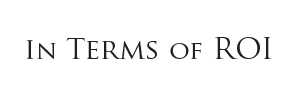
I had categorized the top 100 into 5 types:
A – Had lowered TV to fuel Digital, now putting back some from Digital into TV
B – Continuing to lower TV via shifts to Digital
C – Increasing TV and Digital
D – Digital down, TV up
E – Decreasing TV and Digital
Looking at the 39 of the 100 advertisers who had been lowering TV to shift monies into Digital, 15 (type A) of them were already shifting some dollars back into TV by Q1 2016. The categories coming back strongest to TV are automotive, financial, technology, telecom, and travel. QSR stayed unchanged over the 9 Quarters at 79% TV. Categories where the original siphoning TV for Digital is generally continuing are consumer electronics, CPG, entertainment, fashion, retail, and prescription drugs. Of course, there are advertiser-by-advertiser differences within product categories.
For example, within CPG, not a category that has as a whole showed a move back to TV, three CPG advertisers did show the A pattern of return to TV. All three showed sales lifts during the period after the putbacks started, averaging +4.8% sales lift. The incremental sales were on average $4.68 for every incremental $1.00 TV dollar.
Some advertisers had begun to individually notice ROI declines which caused their movement back into TV, according to anecdotal evidence. Then when ARF in March 2016 came out with its first Ground Truth results, indicating that the optimal mix of TV and Digital was 78% TV, this may also have influenced other advertisers to turn back, since as of Q1 2016 SMI data show that the average such mix among the top 100 is only 64% TV, 14 points shy of the optimal point.
Looking at the results for all CPG advertisers in the top 100 spenders, types A, C and D which all involve TV increases, showed sales increases of +4.8%, +4.0%, and +7.9% respectively. Types B and E where TV is decreasing showed sales increases of +4.7% and +1.1% respectively. All advertisers in types A and D (where TV is going up and Digital down) showed sales increases, whereas the sales patterns within the other types were mixed, some up, some down.
Looking at Non-CPG, all 4 in type A (TV returners) increased sales, averaging +8.8%. By contrast, those continuing to deplete TV in favor of Digital went down in sales averaging -3.1%.
As previously reported, we ranked the 29 advertisers for which we had sales data by their sales increase, finding a dozen substantially higher than the others, averaging +14.6% in sales growth. At first we tried to explain this based on the types of Digital they are using, but other than being ahead of the others in the use of pure play Digital video and lower than in the others in the use of search, the differences were extremely minor and not likely to drive major sales differences. Then we looked at TV and it jumped out us that these 12 fastest sales growers had increased TV spend by an average of +25.8%.
A – Had lowered TV to fuel Digital, now putting back some from Digital into TV
B – Continuing to lower TV via shifts to Digital
C – Increasing TV and Digital
D – Digital down, TV up
E – Decreasing TV and Digital
Looking at the 39 of the 100 advertisers who had been lowering TV to shift monies into Digital, 15 (type A) of them were already shifting some dollars back into TV by Q1 2016. The categories coming back strongest to TV are automotive, financial, technology, telecom, and travel. QSR stayed unchanged over the 9 Quarters at 79% TV. Categories where the original siphoning TV for Digital is generally continuing are consumer electronics, CPG, entertainment, fashion, retail, and prescription drugs. Of course, there are advertiser-by-advertiser differences within product categories.
For example, within CPG, not a category that has as a whole showed a move back to TV, three CPG advertisers did show the A pattern of return to TV. All three showed sales lifts during the period after the putbacks started, averaging +4.8% sales lift. The incremental sales were on average $4.68 for every incremental $1.00 TV dollar.
Some advertisers had begun to individually notice ROI declines which caused their movement back into TV, according to anecdotal evidence. Then when ARF in March 2016 came out with its first Ground Truth results, indicating that the optimal mix of TV and Digital was 78% TV, this may also have influenced other advertisers to turn back, since as of Q1 2016 SMI data show that the average such mix among the top 100 is only 64% TV, 14 points shy of the optimal point.
Looking at the results for all CPG advertisers in the top 100 spenders, types A, C and D which all involve TV increases, showed sales increases of +4.8%, +4.0%, and +7.9% respectively. Types B and E where TV is decreasing showed sales increases of +4.7% and +1.1% respectively. All advertisers in types A and D (where TV is going up and Digital down) showed sales increases, whereas the sales patterns within the other types were mixed, some up, some down.
Looking at Non-CPG, all 4 in type A (TV returners) increased sales, averaging +8.8%. By contrast, those continuing to deplete TV in favor of Digital went down in sales averaging -3.1%.
As previously reported, we ranked the 29 advertisers for which we had sales data by their sales increase, finding a dozen substantially higher than the others, averaging +14.6% in sales growth. At first we tried to explain this based on the types of Digital they are using, but other than being ahead of the others in the use of pure play Digital video and lower than in the others in the use of search, the differences were extremely minor and not likely to drive major sales differences. Then we looked at TV and it jumped out us that these 12 fastest sales growers had increased TV spend by an average of +25.8%.


No comments:
Post a Comment